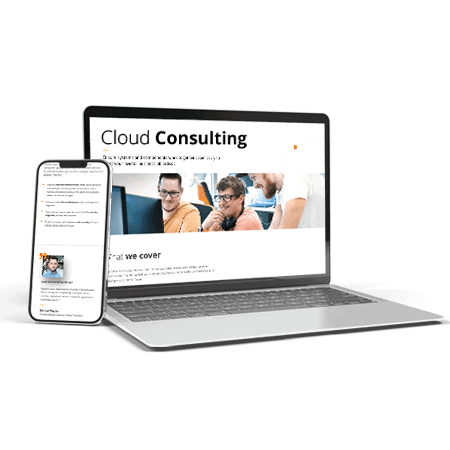
FinOps: best practices and tips to manage Cloud costs
Have a read for tips and FinOps best practices when it comes to managing cloud costs.
With cloud computing becoming increasingly popular, managing cloud costs is one of the most important topics businesses need to tackle. And this is exactly what this article is all about – do read on.
FinOps: the blueprint for Cloud financial management
FinOps (or Financial Operations) is a framework and cultural practice used to effectively manage the financial aspects of cloud computing.
Bringing together finance, operations, and engineering teams it aims at optimising cloud costs, increasing transparency, and aligning cloud usage with business objectives.
Because of its importance, it serves as a blueprint for cloud financial management as it provides a structured approach to control costs and drive value in the cloud.
Statistics say that 89% of IT professionals view FinOps as the way to reign in cloud cost complexity – there is no doubt it’s worth investing in!
Best FinOps practices checklist for financial efficiency
Although cloud computing completely changed the world and the way businesses operate, giving them more agility and scalability, it also created some challenges organisations need to tackle to make the most of its benefits and to use them to their advantage.
With this in mind we prepared for you a list of some most important things to consider when it comes to optimising cloud spending, increasing transparency and aligning cloud usage with business objectives.
Here they are:
Implement Cloud budgeting and forecasting
To start with, implement cloud budgeting and forecasting – it’s a crucial aspect of FinOps practices for financial efficiency as it helps organisations set realistic budgets, plan for future expenses, and adapt to changing business requirements.

To do it right, don’t forget about:
- defining clear objectives,
- involving in the budgeting process stakeholders from finance, operations and other relevant teams,
- setting realistic budgets,
- accounting for any seasonality or periodic fluctuations in resource usage,
- allocating budgets to different departments, projects, or teams based on their respective cloud usage.
When it comes to forecasting – gather historical data, identify trends, use forecasting models to predict future expenses and consider business changes.
Adopt a consumption model
When it comes to FinOps, there is no one-fits-all solution.
To find something that is right for your business, you need to carefully adopt a consumption model, meaning you need to pay for cloud resources based on your actual usage.
Such an approach enhances financial efficiency by aligning costs with business needs.
60% of professionals say their cloud bill is a little higher than it should be or way too high. Adopting the right consumption model is a great way to change that!
To do it:
- understand the specific pricing models offered by cloud providers,
- continuously optimise resource sizes based on actual workloads to eliminate waste and reduce costs,
- implement best practices,
- implement metering tools to track resource consumption in real-time,
- configure alerts to notify teams when resource consumption reaches predefined thresholds,
- establish models to attribute costs to specific projects, teams, or departments, promoting accountability,
- select cloud services that align with performance requirements while being cost-effective,
- use financing from cloud providers and leverage alternative accounting models,
- regularly negotiate with cloud service providers to optimise terms, pricing models, and contractual agreement.
Establish clear KPIs
Without clear KPIs it’s difficult to measure the success of your FinOps activities.
Start with clearly defining key performance indicators that align with your financial goals and objectives.
The next step is to establish measurable targets for each KPI to track progress and success.
That’s done, ensure that KPIs include metrics related to cost efficiency, such as cost savings percentage and return on investment (ROI).
For more on this have a look at our guides on FinOps Consulting and Mastering Cloud Finances.
Utilise cost allocation tags
Leveraging cost allocation tags serves to attribute cloud costs to specific resources, projects, teams, or departments.
Tags enhance visibility, accountability, and enable more granular analysis of cloud spending. Introducing a culture of ownership of the cloud costs reinforces awareness and thinking about cloud spending.
To utilise the tags, start with developing and implementing a comprehensive tagging strategy for cost allocation. Use tags to attribute costs to specific projects, teams, or departments for improved accountability. To ensure consistency and accuracy automate the tagging process.
Enforce cloud resources optimisation
Enforcing cloud resources optimisation involves systematically ensuring that cloud resources are used efficiently, cloud costs are minimised, and performance is optimised.
Here is one of our recent success stories of cloud costs optimisation for a client: TechSoup AWS – Proactively creating AWS Cloud saving plans for the client who now saves up to 50% a month.
To do it right:
- implement rightsizing strategies based on actual usage,
- regularly identify and eliminate unused or underutilised resources to reduce cloud costs,
- utilise spot instances and reserved capacity to maximise cost savings.
Apply governance and compliance standards
One of the most important aspects of FinOps is ensuring that cloud resources are used in accordance with organisational policies, industry regulations, and best practices.
Start with establishing clear governance policies for cloud resource usage, security, and compliance. To enhance clarity, enforce naming conventions for resources.
Conduct regular reviews of governance policies and update them to align with evolving business needs and industry standards.
Conduct regular FinOps reviews
In the world of business things change, and they tend to change quickly.
Regular FinOps reviews help organisations ensure alignment with financial goals in the ever-changing environment, optimise cloud costs, and identify opportunities for improvement.
How to go about conducting them?
- Establish a schedule for regular reviews, considering the cadence of your organisation’s operations.
- Evaluate the performance of established KPIs and adjust strategies based on the outcomes.
- Regularly assess the accuracy of cost allocation to ensure alignment with business initiatives.
- Identify new opportunities for optimisation based on industry trends, technology advancements, and changes in cloud service offerings.
Other important aspects to consider when it comes to FinOps best practices are education of teams on financial awareness by offering training programs, documenting and sharing best practices and scheduling periodic audits to ensure adherence to governance policies and compliance standards.
Start your Cloud FinOps journey with Future Processing
Starting your Cloud FinOps journey doesn’t need to be tricky or difficult if you decide to work with partners that have done it before and are experts in the field.
At Future Processing we are experienced in all aspects of cloud computing including Cloud FinOps, no matter what stage of digital transformation you’re at. Just get in touch with our team and let’s see how we can help you achieve your goals!




